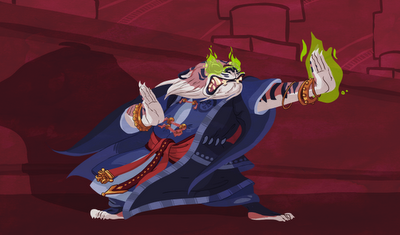
The Marzanna appears as an old woman, frostbite-blue and dressed in torn rags of animal hide. Despite its relatively humanoid appearance, the Marzanna is far beyond human - viewed by villagers as a personification of death and winter, she wanders the snowy wastes, tricking stray travellers and feasting on their cold flesh. Tales tell that if you can trick a Marzanna, you can fool death himself.
Merry belated christmas! Both our monsters this week come from the Frostburn book, something of a nod towards the fiendishly chilly climes we currently find ourselves in. Hags are some cool creatures, and the Marzanna is one of my favourites. The name actually comes from an old Russian goddess of winter which in some parts of the world is still venerated each year by burning, then "drowning" her effigy to bring winter to an end. Cool, huh? My picture this week is sort of special in that the inking was actually done with a pen by hand. I still used photoshop to comp it all together but I think i need to at least start more stuff by hand! Using a computer still feels like the quick-and-easy route. Maybe that can be my new years' resolution!












































